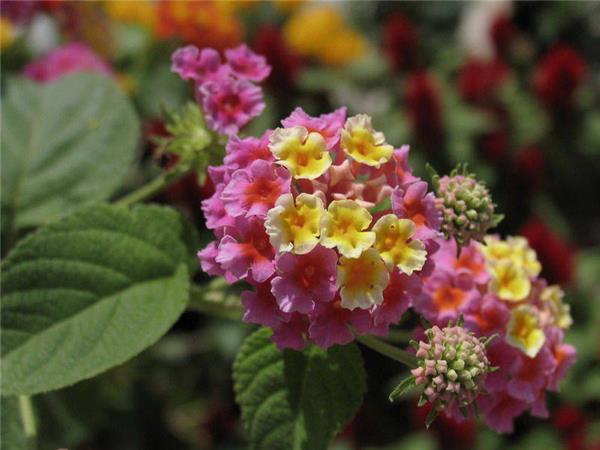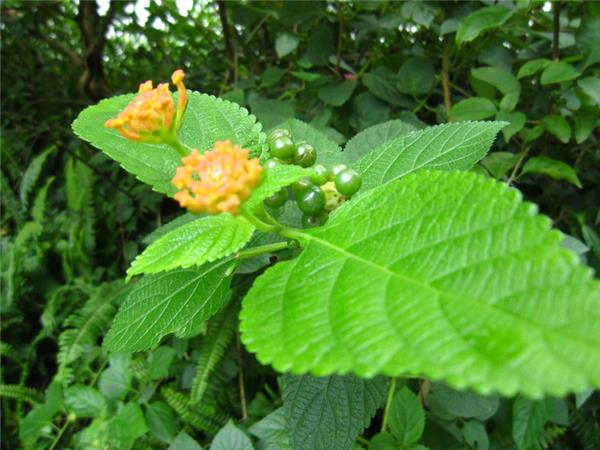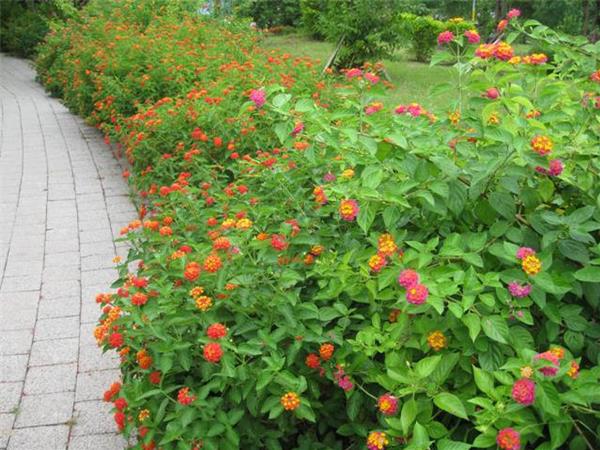The function of five-color plum blossom how to grow five-color plum blossom
Five-color plum blossom is a typical flower-watching plant, because its rich color is different from other flowers, different colors can be seen on the same flower cluster, the ornamental style is unique.

Introduction of five-color plum blossom
1. The flowering period of five-colored plum is about mid-April and late April to mid-February of the next year, but in the south, five-colored plum is generally directly planted in the open field. If properly maintained, it blossoms all the year round. In the north, five-colored plum is generally cultivated in pots and blossoms most vigorously from July to August.
two。 The flower language of five-colored plum: cheerful and lively.
4. The flowers and leaves of five-colored plum blossoms are poisonous, and accidental eating can lead to diarrhea and fever. Five-color plum blossom has a special smell, its smell is non-toxic, without any harm to the human body.

The function and effect of five-color plum blossom
Watch: the five-color plum blossom color is rich and changeable, some varieties will change within a day, feeling is a naughty, lively child, changeable. The five-colored plum blossoms for a long time and can blossom all the year round in the south. It seems that cheerful children always smile to welcome every day. Five-color plum blossom has a special smell, can attract butterflies one after another, colorful flowers, smart butterflies, particularly attractive eyeballs.
Bonsai: five-color plum twigs are soft, suitable for making various forms of bonsai, can be processed into single dry type, double dry type, facing water type, oblique dry type and other different forms of bonsai, used in home decoration is also very appropriate. The leaves of five-colored plum are larger, and the crown is often chic and natural, and it can also be deliberately tied into a round shape. Because of its rapid growth, strong germination and resistance to pruning, the modeling method should be mainly pruning, supplemented by flat binding and traction; the branches of five-colored plum are straight and can be bent with wire. It can also be modeled by the method of "cutting dry and storing branches" of the Lingnan School.
Purify the air: five-colored plum has strong resistance to dust and dirt. It can be planted in the home courtyard or roadside. It can absorb and purify the dust in the air and improve the air quality.
Repelling mosquitoes and flies: the sensitive smell of mosquitoes and flies is volatilized from the branches, leaves and flowers of five-colored plum, which has a strong effect of repelling mosquitoes and flies. It is not only effective in repelling mosquitoes and flies, but also colorful and changeable. It has the reputation of "repelling mosquitoes and flies and beautifying the courtyard".
Medicinal use: five-colored plum can be collected and processed as root or whole plant as medicine, which can be collected throughout the year, dried or fresh. Root: clearing heat and detoxification, dispelling knots and relieving pain. For colds and high fever, persistent fever, cervical lymphatic tuberculosis, rheumatic bone pain, stomachache, fall injury. Leaves and branches: external use to treat eczema, dermatitis, skin itching, furuncle swelling, fall injury.

Third, the reproduction mode of five-color plum blossom
Sowing and reproduction: sowing can be sowed in pots with high humidity and temperature at the end of autumn, or in spring. Sowing seedlings in South China can be used to plant flower beds, and flowers can be seen in September of that year. After the fruit is ripe, it is picked and retted, soaked in water and scrubbed to remove the pulp, and the seeds are obtained. To avoid losing water, seeds can be sowed with picking in autumn, or stored in mixed sand, and sown again in spring. The temperature should be kept above 20C in the germination stage after sowing. The germination rate is about 60%, and the seedlings sown in the south can blossom in autumn.
Cuttage propagation: cuttings are carried out more than May, one-year-old branches are taken as cuttings, two leaves of the upper section are retained and cut off in half, and the lower section is inserted into the matrix of plain sandy soil or semi-mixed with fully mature humus soil, shading, film moisturizing, heat preservation, keeping the bed moist and air humidity at 80% 90%, about 1 month to root and sprout new shoots. If the seedlings want to plant flower beds in the open field after survival, they should first be planted in a small flowerpot. When the roots of the cuttings grow to the 5cm or so and some of them are brown, they are transplanted into the pot and maintained in the shade for a period of time. After the new roots are developed and enriched, the white roots protrude from the bottom hole, and then take off the pot and plant.
Striping propagation: the plant has many branches and takes root on the soil, so the soft branches are scratched and pressed into the soil, and the roots are cut off after the root system grows.

Is the five-colored plum, which changes constantly in one day, very attractive? this kind of flowers, which are constantly changing with temperature and light, have high ornamental value, and can add a lot of color to the room life.
Related
- Wuhan Hospital Iron Tree Blooming Result Was Instantly Frightened by the Gardener Master
- Which variety of camellia is the most fragrant and best? Which one do you like best?
- What is the small blue coat, the breeding methods and matters needing attention of the succulent plant
- Dormancy time and maintenance management of succulent plants during dormancy
- Minas succulent how to raise, Minas succulent plant pictures
- What are the varieties of winter succulent plants
- How to raise succulent plants in twelve rolls? let's take a look at some experience of breeding twelve rolls.
- Attention should be paid to water control for succulent plants during dormant period (winter and summer)
- Watering experience of twelve rolls of succulent plants
- Techniques for fertilizing succulent plants. An article will let you know how to fertilize succulent plants.



